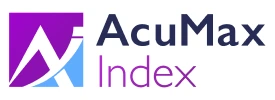How is your company setup for future success? When structuring a leadership team the CEO isn’t the most important person for the future of the company, it is the team surrounding the CEO that determines its fate. Historically, companies with strong leaders without a successful supporting work management team have not fared well after the CEO’s departure. In contrast, companies like Walmart where there was distributed leadership and leadership development programs were able to continue to thrive because the structure encouraged leadership throughout the company.
Take a step back to think about the organization of your company and whether it aligns with your goals for the organization and if it may be time to restructure. Your organizational structure should optimize the performance of the company and make it clear who is responsible for achieving the components of the organization’s strategic vision.
There are two extremes of leadership structure: mechanistic and flat/organic. In a mechanistic structure there is a very hierarchical design with a very clear chain of command, a truly “top-down” approach to organization. When you mentally picture an organization chart, this is probably the structure that comes to mind.
Flat, also known as organic, structure is more collaborative and flexible. Organizing more towards the flat end of the spectrum has quite a few advantages. A flat structure allows for greater communication between employees and leaders, allowing for quicker change and an approach that will better promote innovation. Having more direct communication eliminates the need for middle management and empowers people to make decisions. A flat structure also prioritizes performance, not seniority, and sets the expectation that everyone on the team is there to contribute and not to stand on the sidelines.
When trying to decide the best way to organize your company for success look at how you would like your teams and employees to interact and then design the structure that best achieves your desired state. Think about the various ways that your people or teams could be organized. You could organize based on division (product, service line, or industry), function (IT, human resources, marketing), or location (physical location, region or region they support). Also think about what solutions you want your organization to be able to achieve and orient your strategic planning to those solutions. Once you figure out the problems that you need to solve as an organization there may be an immediate choice that jumps out at you as the best way to organize to support solving those problems.
Organizing Your Teams for Success





